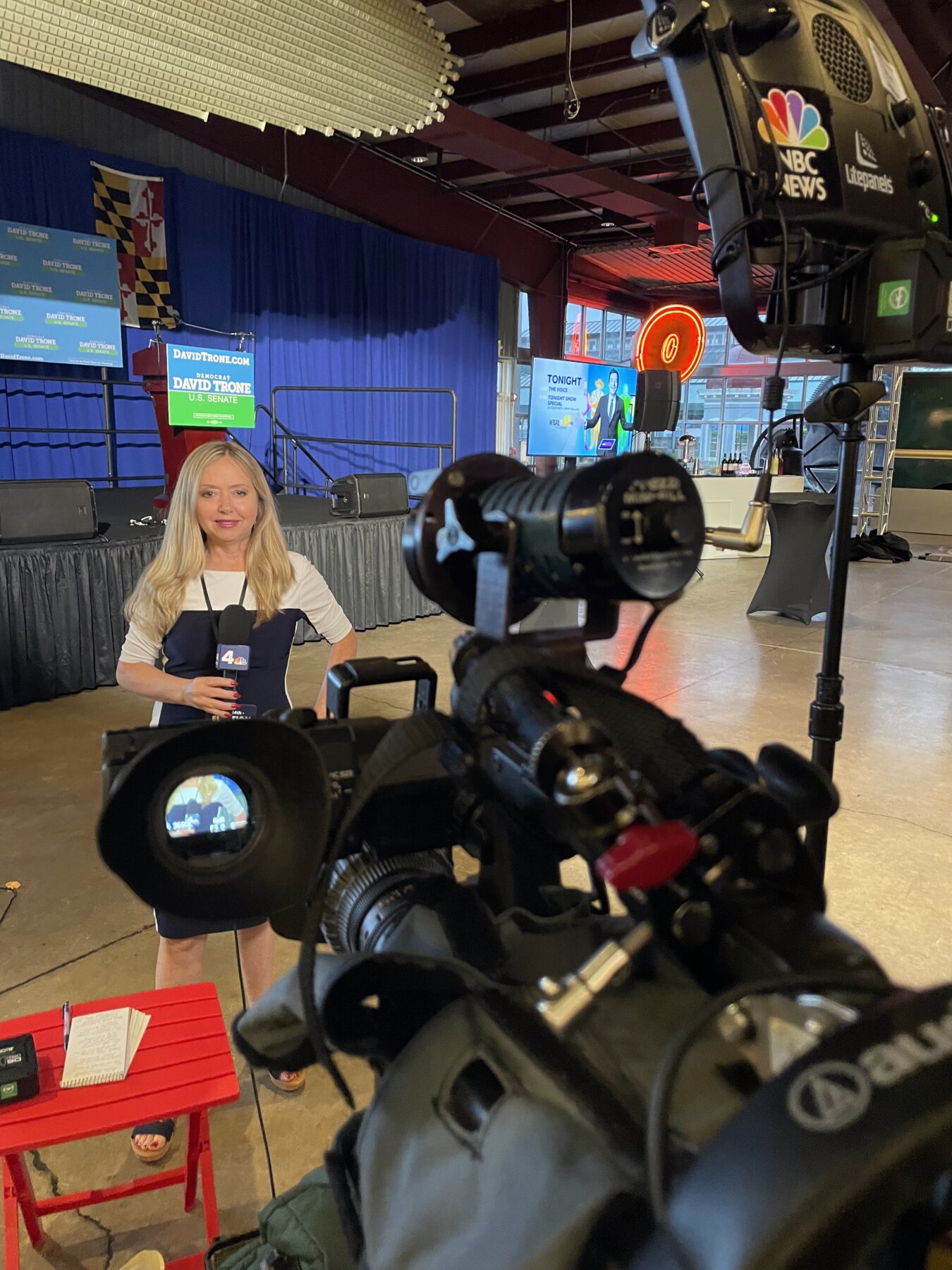
When reporter Shelby Bremer moved from Chicago to San Diego to cover housing last year, she faced a challenge: How would she localize national stories in a brand-new city?
“It’s been really essential for me to lean on people with more experience in the newsroom and say, ‘OK, what’s the context here? Tell me the players, tell me the dynamics,’” said the NBC 7 San Diego reporter. “Because it’s important to have that so I can walk into a situation feeling like I understand what’s going on.”
In an ever-churning national news cycle, it’s crucial for journalists to find local angles to stories coming out of Washington and beyond. Nearly half of Americans said that local news is very, if not extremely, important to their community, according to a 2024 Pew Research study.
“When you’re sitting at a national level, you’re saying, ‘OK, we’ve got to find some impact here,’” said Matt Glassman, vice president of regional editorial at NBC News. “On the local level, your reporters are in the communities and they hear what’s going on. A lot of times, the local TV news stations will find out about how things are being impacted before the network does.”
What local stories can add to national stories is a better sense of how these major issues affect people’s everyday lives.
“It’s really important to try to put a face on the story and not just speak in bigger terms, but also really hone down into the local impact — how is this affecting people in our community?” said Darcy Spencer, a general assignment reporter for NBC 4 Washington, D.C. “I think that’s the best that we can do to really help people understand the world around them and what’s happening right now.”
I spoke with journalists about how they localize national news narratives, from economics to education. Here’s what they had to say.
Keep listening and talking to the community
Every journalist I spoke to emphasized that reporters need to go into their communities and talk to real people to see how national stories are affecting them.

“It shouldn’t be as simple as a Google search,” Glassman said. “Go talk to a lot of people. You don’t have to use all of it in your story. In fact, you probably won’t, but it’ll help you get a sense of it.”
Of course, covering how a major story impacts a specific community requires understanding its nuances. While some reporters, like Spencer, report on communities they’re from, others, like Bremer, are getting to know a new place and gaining the trust of local sources.
Insight from her colleagues and sources led her to revisit a controversial affordable senior living housing development in San Diego that the station first reported on in 2018, and she found the community now embraces the building.
“One of my favorite things that we do in journalism is go back to places,” said Bremer, who noted she often used this practice in Chicago. “Often in journalism, we parachute in on what might be the worst day of somebody’s life, but when we leave, their journey continues. Continuing to check on people you’ve covered is such an important part of what we do.”
Engage with the local community online, too


In addition to talking to people, Spencer has found stories by engaging with social media accounts focused on the D.C communities she covers. In 2022, she saw a NextDoor post by a Maryland woman who was the victim of a TikTok trend called the “Kia Challenge,” in which teenagers stole Kias using USB charging cables. It became a story Spencer reported on air.
Freelance journalist Taylor Jung also found many story ideas through social media during her time as a social justice reporter at NJ Spotlight. She makes sure to center the communities she covered by making sure her reporting is accessible. After Jung published an article and video on Philadelphia Chinatown’s gentrification, her sources asked her to translate it into Chinese. Once she added subtitles to the video, Jung noticed more engagement.
“I think that’s also part of making sure something has a local tie — is it accessible to the community you’re writing for and about?” she said.
Avoid too much overlap with national stories
As host of “Kansas City Today” and newscaster for “All Things Considered” at NPR member station KCUR, Nomin Ujiyediin makes sure the shows’ spots and interviews are filled with information pertinent to the Kansas City community, as it follows the national NPR newscast.
“If I’m running a story that is related to a national story, I’ll look at the rundown and make sure it’s not going to be airing too close to something else that NPR is doing,” she said. “Because I think that sounds repetitive, boring and awkward for the audience.”
However, it’s also important to keep some national context in a local story. For instance, when Ujiyediin reported on some Kansas City parents who wanted books dealing with race or LGBTQ issues banned in schools, she made sure to speak to groups that represented each side of the story, along with national experts, to give context to the greater book-banning trends across the U.S. The story wound up getting picked up by NPR’s national news show.
“This is a local story, but also it’s really important to tie it to national stuff going on,” she said. “It’s two sides of the same coin. And NPR was interested in this because the story was local and also national.”
Look for local solutions
Both local and national stories tend to focus on problems or ongoing issues, but today’s audiences also want to hear about potential solutions. According to the 2023 Reuters Institute Digital News Report, 46% of people who avoid the news were interested in solutions-based journalism and 55% wanted positive stories.
“Journalism is really good at finding a problem, but a lot of people feel weighted down by the problem,” said Deborah D. Douglas, director of the Medill Midwest Solutions Journalism Hub at Northwestern University. “We know that, especially at the grassroots level, there are people working to solve problems. So it’s not just another crime story, but it’s a crime story that is fleshed out with what people are doing to be agents of their own salvation.”
Douglas notes that not every news story is a solutions journalism story, but when covering systemic issues, reporters should consider a framework that highlights local responses and limitations and include affected community members and experts.
“Establish a relationship with these communities of interest to see how they’re responding,” she said.



